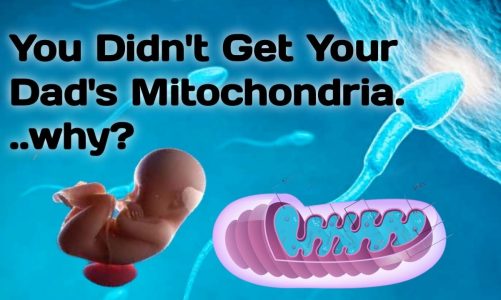Click Here to Subscribe: http://Bit.ly/ThomasVid
My Discount on Four Sigmatic’s Cordyceps: http://foursigmatic.com/thomas15
My Website: http://ThomasDeLauer.com
4 Ways to Boost Energy and ATP that Everyone Ignores – Thomas DeLauer
There are three steps in oxidative phosphorylation that have independent roles in setting the overall mitochondrial ATP flux and thereby have direct impact on locomotion:
Step 1
The first is the electron transport chain, which sets the pace for oxidation – the electron transport chain capacity per mitochondria declines with age and disease, but can be revived by both acute and chronic treatments
Step 2
The second step is the coupling of ATP supply from O2 uptake (mitochondrial coupling efficiency)
Step 3
The final step is ATP synthesis itself, which is under dynamic control at multiple sites to provide the 50-fold range of ATP flux between resting muscle and exercise at the mitochondrial capacity
Electron Transport Chain & Exercise (Step 1)
The mitochondrial capacity for using O2 is linked to the sustained capacity for generating muscle power
The respiratory capacity of mitochondria is very near to the maximal oxygen uptake rate of mitochondria (can increase respiratory capacity through endurance training)
A study published in The Journal of Applied Physiology found that 8 weeks of endurance training raised, in equal proportions, the muscle mitochondrial content and leg power output
*30 min of endurance training increased volume density of mitrochondria by 40%* – for this to happen, it means you raise the capacity for ATP supply/increase ATP
ATP Coupling
A second path is to improve the capacity for ATP generation per mitochondrion (more ATP produced per mitochondria) by targeting the processes underlying ATP supply
One such mechanism is the coupling of oxidation to phosphorylation (mitochondrial coupling efficiency), which can be improved to elevate ATP generation per O2 uptake
An example of this improvement is the acute effect of dietary nitrate on mitochondrial coupling efficiency
Free nitrate is released in the muscle cell by drinking beetroot juice, and acts via the nitrous oxide pathway to elevate mitochondrial ATP synthesis per O2 uptake
https://www.ncbi.nlm.nih.gov/pmc/articles/PMC5756374/
ATP Synthesis
The final step in oxidative phosphorylation – the control of ATP synthesis itself – is also malleable – the need for a flexible control of phosphorylation lies in the failure of a simple regulation mechanism to balance mitochondrial ATP synthesis with contractile ATP demand
This feedback mechanism involves the product of ATP use – ADP – as the signal to activate phosphorylation in proportion to ATP need
Improving sensitivity to ADP regulation of phosphorylation helps activate greater ATP supply (as shown by the effect of a 3-week dietary Omega-3 supplementation on isolated fiber preparations from human vastus lateralis)
Published in The Journal of Physiology, researchers supplemented young healthy male subjects (18) with fish oils [2 g eicosapentaenoic acid (EPA) and 1 g docosahexaenoic acid (DHA) per day] for 12 weeks
Total EPA and DHA content in mitochondrial membranes increased ∼450 and ∼320%, respectively, and displaced some omega-6 species in several phospholipid population
Cordyceps
Cordyceps increase the body’s production of the molecule adenosine triphosphate (ATP), which is essential for delivering energy to the body & brain
The involvement of cordyceps in adenosine triphosphate (ATP) production also accounts for a decrease in physical fatigue when it is administered
In studies, the administration of cordyceps (200 mg/kg/day, p.o.) not only improves hepatic energy metabolism and blood flow, but also increases significantly the ATP/inorganic phosphate ratio in the liver with no steatosis, necrosis, inflammation, or fibrosis in the liver specimens
https://www.ncbi.nlm.nih.gov/books/NBK92758/
References
1) Mitochondria to motion: optimizing oxidative phosphorylation to improve exercise performance. (2016, January 1). Retrieved from http://jeb.biologists.org/content/219/2/243
2) Hoppeler H , et al. (n.d.). Endurance training in humans: aerobic capacity and structure of skeletal muscle. – PubMed – NCBI. Retrieved from https://www.ncbi.nlm.nih.gov/pubmed/4030584
3) Larsen FJ , et al. (n.d.). Effects of dietary nitrate on oxygen cost during exercise. – PubMed – NCBI. Retrieved from https://www.ncbi.nlm.nih.gov/pubmed/17635415
4) Herbst EA , et al. (n.d.). Omega-3 supplementation alters mitochondrial membrane composition and respiration kinetics in human skeletal muscle. – PubMed – NCBI. Retrieved from https://www.ncbi.nlm.nih.gov/pubmed/24396061
5) High-Glucose Stimulation Increases Reactive Oxygen Species Production Through the Calcium and Mitogen-Activated Protein Kinase-Mediated Activation of Mitochondrial Fission. (1, February). Retrieved from https://www.ncbi.nlm.nih.gov/pmc/articles/PMC3025178/
source


